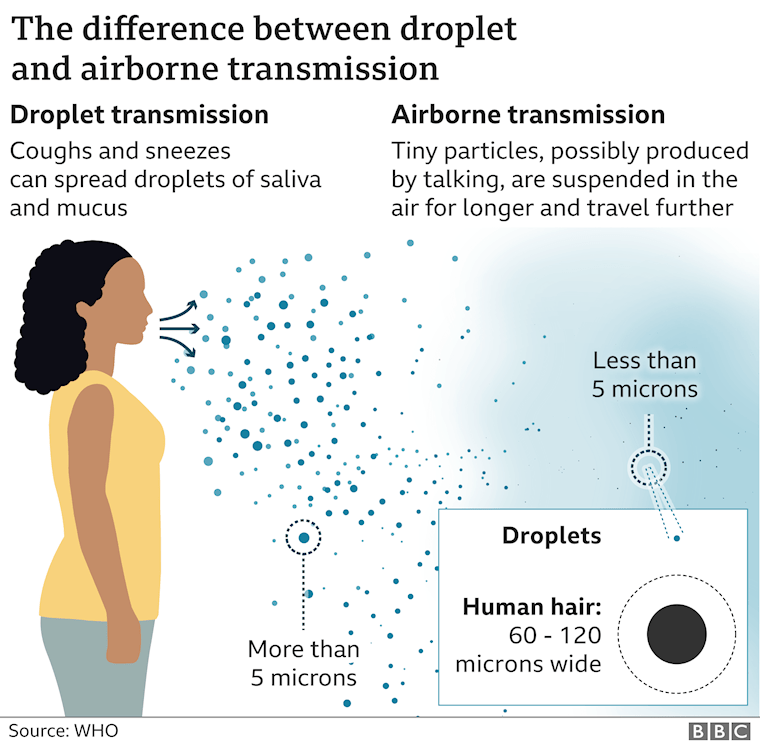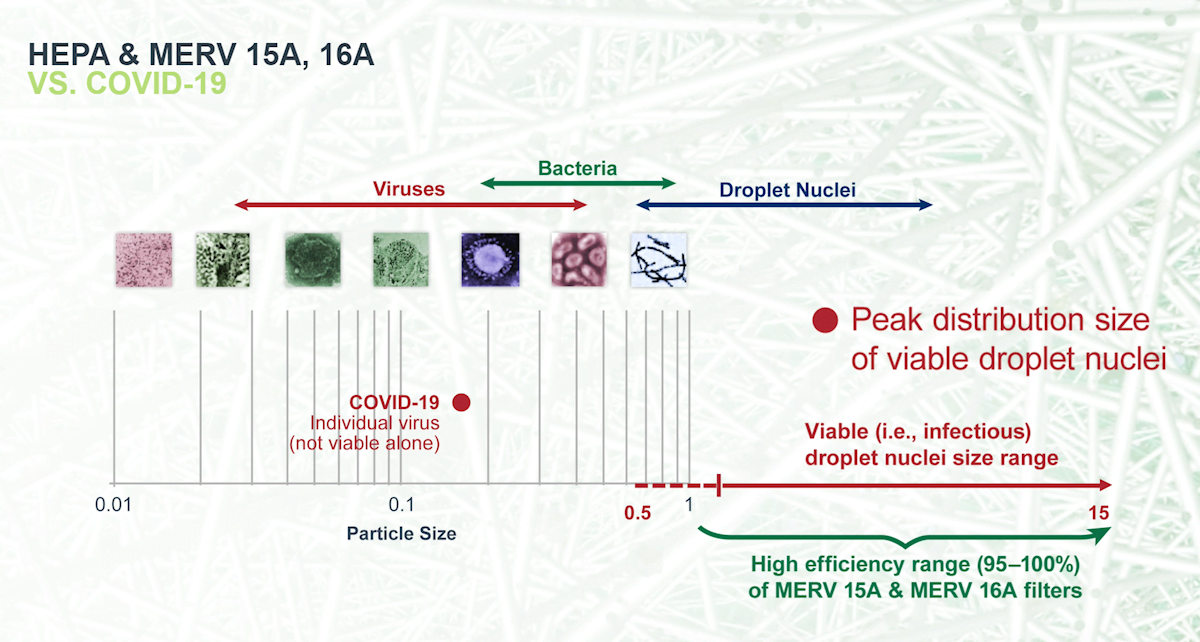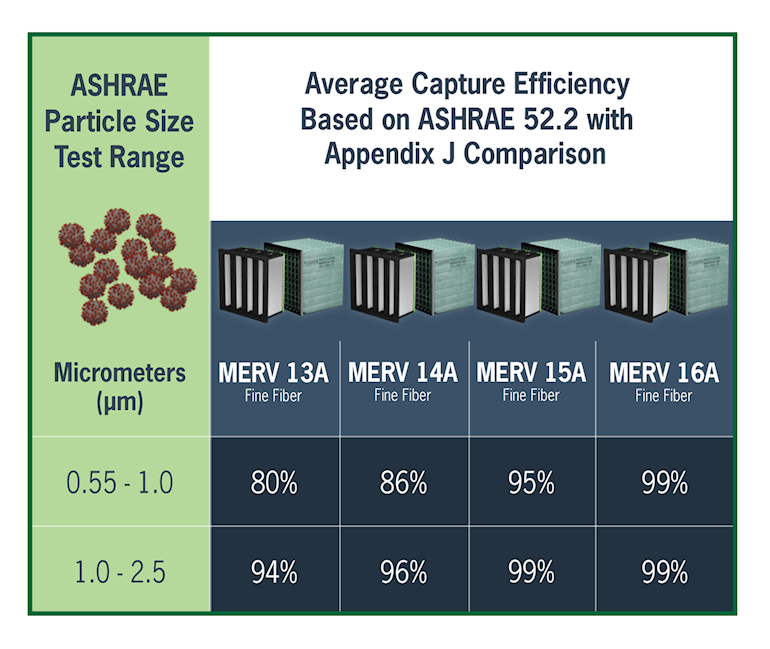
In a response to requests for more research, The WHO has acknowledged that in the case of COVID-19, airborne transmission through respiratory aerosols could not be ruled out in crowded and poorly ventilated settings. Scientists across the world continue looking for clarifying evidence as it may affect many guidelines on how to mitigate risk indoors. Previously, The WHO had emphasized studies and evidence detailing the transmission of COVID-19 from infected people to others as primarily occurring by those in close contact through respiratory droplets, either by direct contact with the infected person or by close contact with contaminated objects and surfaces.
The virus does not travel through the air by itself, but rather is contained within these droplets. The dividing line between large respiratory droplets that fall quickly to nearby surfaces and the much smaller aerosols which can remain suspended in the airstream for hours, is broadly set at 5 microns.
However, the size of droplets does not always remain steady. Droplets begin to dehydrate once exposed to the environment which reduces both their size and mass. This creates a grey area between droplets large enough to fall quickly and droplets small enough to remain in the airstream for longer periods of time.
When considering risk mitigation as it relates to air filtration, the recommended strategy is to put systems and air filters in place that have a higher likelihood of capturing both droplets and aerosols that exist outside the social distancing zones before the contaminants make contact with healthy people.
This infographic shared by BBC explains the difference between the droplet and airborne transmission.

When it’s time to consider the proper particle capture efficiency of the air filter, it’s critical to understand the size of the particle creating the risk. In the case of minimizing the risk of COVID-19 infections, defining the size of the respiratory droplets and aerosol that could possibly contain the SARS-CoV-2 virus is the first step.
Other diseases are spread by respiratory droplets and aerosols, not just COVID-19. As such, the size and dispersion of human exhaled droplets and aerosols have been well researched. While the infectious dose of COVID-19 is not known, a 0.5-micron size aerosol particle is likely capable of containing a sufficient quantity of viruses to be considered a risk. That’s the small end of the scale. On the larger end of the scale, are the droplets not quite large enough to fall within the six-foot social distance zone from the source. Between those, one size distribution analysis showed a peak at 2.5 microns for those particles. As such, an air filtration solution that offers particle capture efficiency of 95%+ within these size ranges and is able to scale upwards based on risk factor, would be a sufficient risk mitigation strategy.


In situations where the HVAC system lacks the capability to accept higher MERV-A rated filters or is incapable of providing adequate ventilation, consider installing stand-alone air purifiers as supplemental filtration. These products can be positioned to target specific areas where improved air quality is needed.
Can HVAC systems help prevent transmission of COVID-19? - Published by McKinsey
WHO rethinking how COVID-19 spread in the air – Published by BBC
High humidity leads to loss of infectious influenza virus - Journal
Transmission of COVID-19 virus by droplets & aerosols – Study & Journal